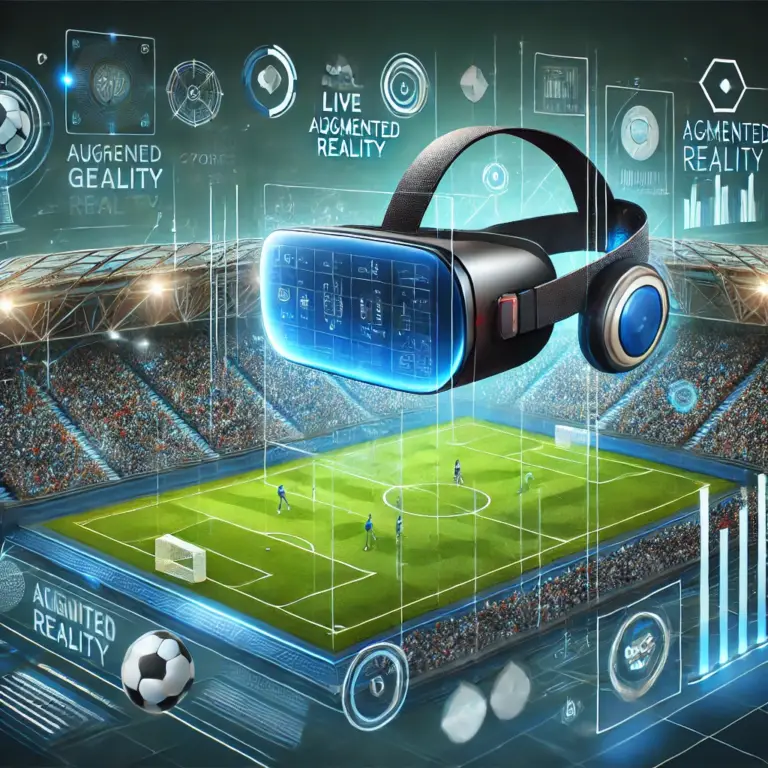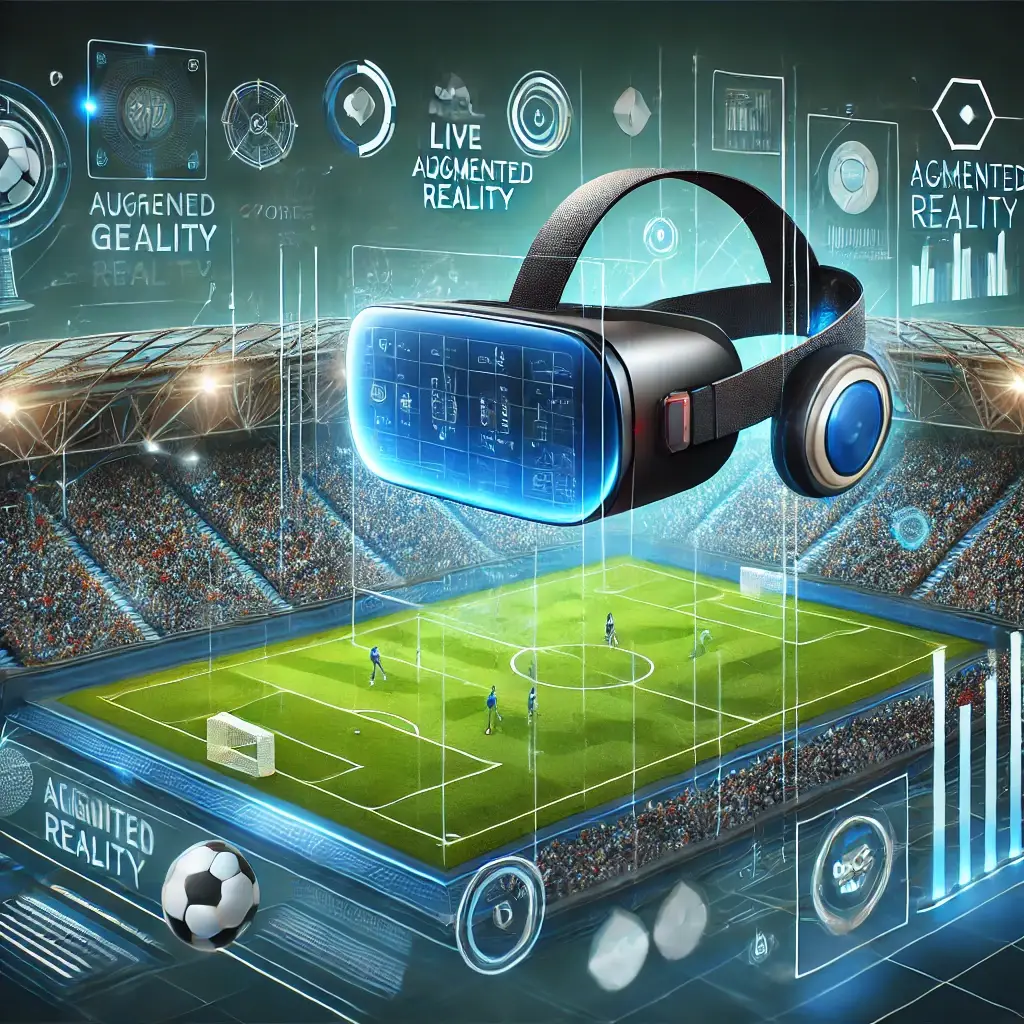Introduction to Augmented Reality in Sports
Augmented Reality (AR) has emerged as a groundbreaking technology that enhances the real-world environment by overlaying digital content. In the sports industry, AR is not merely a novelty but a game-changer, transforming how fans experience live events and how players improve their skills. With the proliferation of AR-enabled devices, sports organizations and broadcasters are increasingly exploring AR to elevate engagement and create immersive viewing experiences.
Learn more Here
What is Augmented Reality?
Augmented Reality is the technology that superimposes digital information—such as images, data, or video—onto the real-world environment through devices like smartphones, tablets, AR glasses, or even large display screens in stadiums. AR has been around for a while, with its roots dating back to the 1960s, but it is only recently gaining momentum in various fields, including sports, due to advancements in computing power and mobile technology.
The Intersection of AR and Sports
The combination of AR and sports is enabling new avenues for fan engagement and athletic performance. Unlike Virtual Reality (VR), which immerses users in an entirely digital environment, AR supplements the real-world view, enhancing the audience’s perception of live sports events.
Enhancing the Fan Experience
Fans are at the heart of sports, and AR promises to transform their viewing experience. By incorporating AR into mobile apps or stadium displays, fans can get instant access to player stats, watch replays from different angles, and even interact with 3D holographic players. Sports broadcasters can offer an enhanced narrative by displaying contextual information, such as scores, player heatmaps, and win probabilities during live matches.
Real-Time Data Visualization
One of the most impactful applications of AR is real-time data visualization. For instance, during a football match, fans watching through an AR-enabled app can see player stats hovering over athletes, access detailed replays with illustrated insights, or view predicted trajectories of free kicks. This added layer of information provides fans with deeper insights, turning passive viewing into an interactive and educational experience.
Virtual Stadiums and 360-Degree Viewing
Imagine attending a football game from the comfort of your home, with the ability to look around a 360-degree virtual stadium, as if you were physically there. With AR headsets and devices, sports organizations are developing virtual stadium experiences that allow fans to “attend” games from anywhere in the world. Users can switch between seats, watch from the coach’s bench, or even get a first-person perspective from a player’s view.
AR in Player Training and Development
Beyond enhancing fan experiences, AR is proving to be a vital tool in player training and development. By projecting digital training drills, highlighting problem areas, and offering real-time feedback, coaches can help players refine their techniques and strategies more efficiently.
Real-Time Coaching and Feedback
AR allows for instantaneous coaching by superimposing visual cues and tactical instructions on the player’s view during practice sessions. Whether it’s correcting a player’s posture in tennis or showing real-time play suggestions in basketball, AR offers coaches an unprecedented level of precision in giving feedback.
Injury Prevention and Recovery
Player health is another critical area where AR is making strides. With AR, trainers and medical staff can monitor a player’s biomechanics and simulate recovery exercises more effectively. Athletes recovering from injuries can wear AR-enabled devices to see visual guides for proper movements, ensuring a safer and faster rehabilitation process.
AR Technology and Live Sports Broadcasting

For live sports broadcasting, AR is revolutionizing traditional media by creating immersive and personalized viewing experiences. Sports channels can integrate AR features to deliver interactive broadcasts, including on-screen analytics, 3D replays, and player tracking.
Immersive Viewing Experiences
Broadcasting in AR isn’t limited to stadium displays. AR apps can allow fans to overlay graphics and stats onto their TV screens or mobile devices, giving them more control over what they see and enhancing their connection with the game. Imagine watching a game and seeing instant infographics on your coffee table, detailing the latest player stats or key moments in the match.
Interactive Broadcast Features
AR broadcasts offer the potential for interactive experiences, enabling viewers to zoom in on key plays, analyze player movements with heat maps, and even switch to different camera angles in real time. This not only makes the viewing experience more engaging but also more informative for fans who want deeper insights.
Use of AR in Different Sports
AR is not limited to a single sport but has applications across various disciplines. Let’s explore how AR is being utilized in some of the most popular sports worldwide:
1. AR in Football (Soccer):
Broadcasters are using AR to draw offside lines, project instant replays, and show player metrics such as speed and distance covered. Fans can enjoy a richer understanding of the game, seeing analysis overlays while watching matches.
2. AR in Basketball:
AR apps can display shot trajectories, player stats, and on-the-court tactics during live games. With AR glasses, coaches can visualize plays and strategies in real time.
3. AR in Tennis:
Viewers can follow ball trajectories and line calls with precision, offering an in-depth look into game decisions and player tactics.
4. AR in Motorsports:
AR tech is used to track cars and provide real-time analytics on driver performance, such as lap times, car speeds, and racing lines.
Challenges of Integrating AR in Sports
Despite the excitement, implementing AR in sports comes with challenges. Technical barriers include the cost of AR hardware, integration with existing broadcast infrastructures, and developing real-time data processing capabilities. There are also logistical issues, such as aligning digital content with physical environments without delays or glitches.
The Future of AR in Sports
The future of AR in sports looks promising, with continuous innovations on the horizon. As AR technology becomes more affordable and accessible, we can expect widespread adoption not only in professional sports but also at the grassroots level. AR could democratize access to in-depth sports analytics, allowing amateur athletes and fans to engage with sports on a much deeper level.
Broadening Accessibility
One of the key areas of growth is making AR features more accessible to fans who may not own AR headsets. As smartphone capabilities improve, more fans can enjoy AR experiences directly through mobile apps or on stadium displays.
Expanding Use Cases Beyond Live Viewing
The scope of AR in sports goes beyond live game viewing. Fantasy sports leagues can integrate AR to let users analyze player performances, and e-sports can employ AR for audience engagement, creating a bridge between the physical and virtual worlds.
Frequently Asked Questions
1. What is augmented reality in sports?
AR in sports involves overlaying digital content—such as stats, graphics, and visuals—onto live sports events to enhance the viewer’s experience.
2. How does AR improve the fan experience?AR offers real-time statistics, multiple viewing angles, interactive replays





